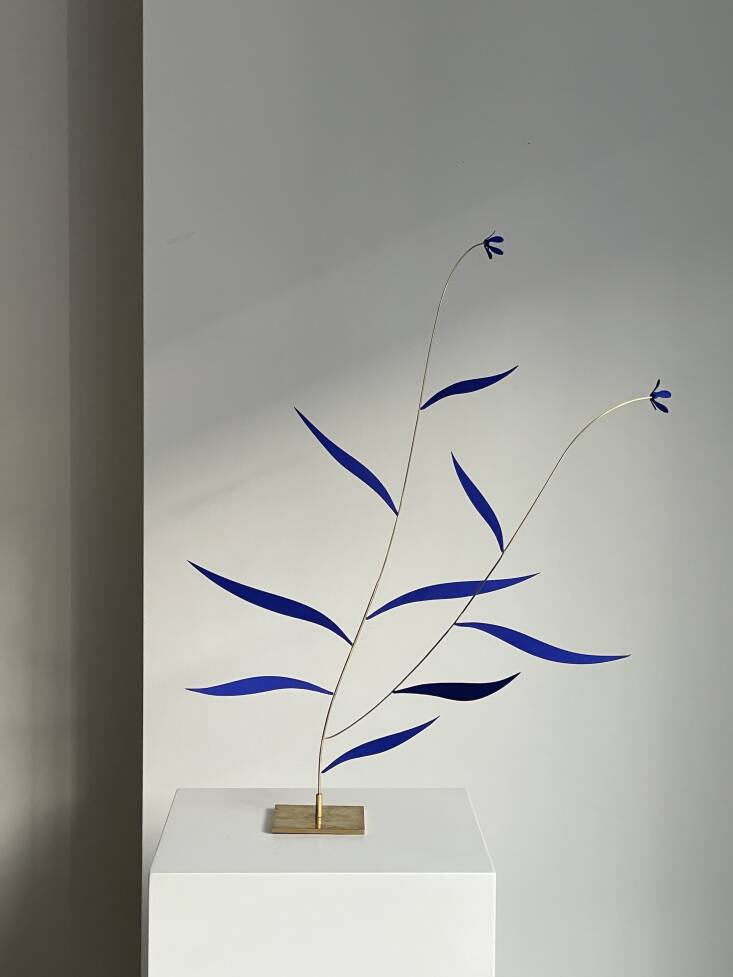I was scrolling through Instagram last spring when a post stopped me in my tracks: a blue paper flower, perched atop a brass stem. I loved everything about it—the vibrant color, the graceful form, the natural subject. It appeared as if it were in suspended animation, the leaves caught while dancing in a warm breeze. The artist behind the sculpture is Daniel Murphy, a sought-after paper sculptor, who has been creating fantastical sets for clients like La Mer, W magazine, and Bloomingdale’s, and this past winter designed a spectacular window for Bergdorf Goodman’s famed holiday decorations. After working on these plant sculptures for several years, he recently made them available to the public through his website and The Gilded Owl gallery in Los Angeles, where you can also view the pieces in person.
Photography courtesy of Daniel Murphy.

Murphy has always been enamored of plants, drawing and photographing them often as a child. But it was in art school where his love really bloomed. “For years, I was preoccupied with drawing and sculpting plants in a very realistic way,” he says. “When I want to capture something in my work, I always need to start this way before I can begin to invent or abstract elements.”

In his recent work he has veered more toward the conceptual than the literal. He finds inspiration in Japanese woodblock prints, which “celebrate the simplicity of line, form, and sense of movement and air,” and Ansel Adams’s This Is the American Earth, which he discovered one day in the stacks of the Strand Bookstore in New York City. “His photographs of trees and plants feel like portraits to me,” he says. “Similarly, I aspire to make work that feels like a moment-in-time.”

To achieve this, Murphy starts by sketching forms and shapes on his iPad. He doesn’t look at specific plant references to copy. Instead, “I let go, and see what shapes and forms naturally came together,” he says. Then, he cuts out the shapes from high quality acid-free, archival paper.

To assemble, he solders and finishes the brass parts, and sandwiches the leaf shapes together using book-binding glue onto the brass armature. “I wanted the connections on the pieces to be extremely clean, so that they look effortlessly connected together.” He waits at least a full day for the glue to dry before mixing the pigment and painting each paper piece with multiple coats of it.

Since he started gardening at his house in upstate New York, Murphy says he’s learned to ease up on his quest for perfection. “Gardening has taught me to let go a bit. I’ve learned to appreciate the surprises and accidents that come with it,” he says. “When I sculpt these pieces and I feel I’ve made an error, I stop myself and take a moment. Some of those accidents have led to great discoveries.”

For more plant-focused art, see:
- Dog Walk Diary: How I Became an Accidental Leaf Artist
- Artist Visit: Kaori Tatebayashi’s Ceramic Garden
- The Strange and Charming World of Finnish Artist Antti Laitinen












Have a Question or Comment About This Post?
Join the conversation (1)